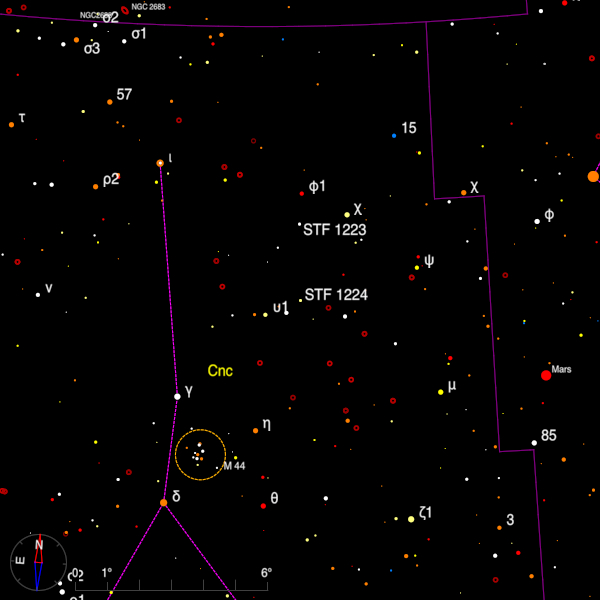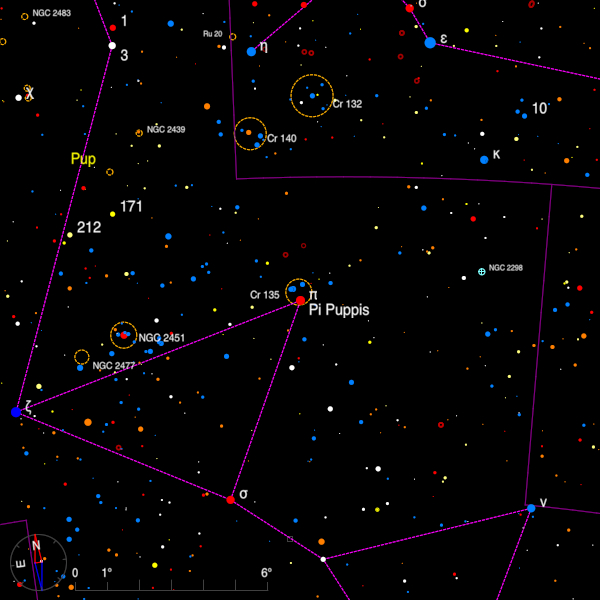February 2021 - Double Star of the Month
In December 1968 I was observing with friends in the back garden of a house in Newcastle-upon-Tyne using a 12-inch reflector. We looked at a number of double stars that night, including phi2 Cancri = STF 1223 (08 26 47.08 +26 56 07.8) and 24 Cancri = STF 1224 (08 26 39.82 +24 32 03.7). These two pairs form a kind of wide double-double and can be found in northern Cancer.

Starting with the beautiful pair iota Cancri, move about 4 degrees SE to find phi2. This is a pair of magnitude 6.9 and 7.5 stars separated by 5".7 and currently at PA 53 degrees. With the 12-inch I noted that the stars appeared white and lilac at a power of x208. Gaia indicates that these stars are at the same distance from us (347 light-years).
STF 1224 is the brighter of the two pairs with the components having V = 5.2 and 6.2. The separation is 5".2 and the position angle 219 degrees. I recorded both stars as being blue-white. Robert Aitken found that the B component was a very close binary of short period. The BC pair revolves in just 21.8 years and the separation stays close to 0".15 throughout the cycle. The Gaia EDR3 catalogue gives a parallax for the A component of 14.429 mas giving a distance of 226 light-years.
The magnitude 2.5 star pi Puppis (07 17 08.56 -37 05 50.9) lies in a rich area of the Miky Way which is part of the Vela-Puppis star forming region. It is surrounded by a number of naked-eye stars and the open cluster Collinder 135.

Pi, which is distinctly red, is a close, very unequal double star which was discovered by Hipparcos in 1991 but whose nature does not appear to have been confirmed since. Along with a magnitude 7.9 star some 67" distant in PA 213 degrees it also forms the pair DUN 43.
To the north of pi are the bright stars upsilon 1 (V = 4.7) and upsilon 2 Puppis (V = 5.1) which are 4 arc minutes apart. Both these bright stars are variables. Upsilon 1 is also known as NV Puppis whilst upsilon 2 is NW Puppis. A V = 8.8 star lies at 119" and 215 degrees from B whilst William Jacob, observing from India, discovered a fainter companion (V = 9.1) to C at 3".1 and 209 degrees; this pair is now known as JC 10. There is another open cluster nearby called UBC7 and its possibly binary relation with Collinder 135 has been discussed.
Bob Argyle - Double Star Section Director